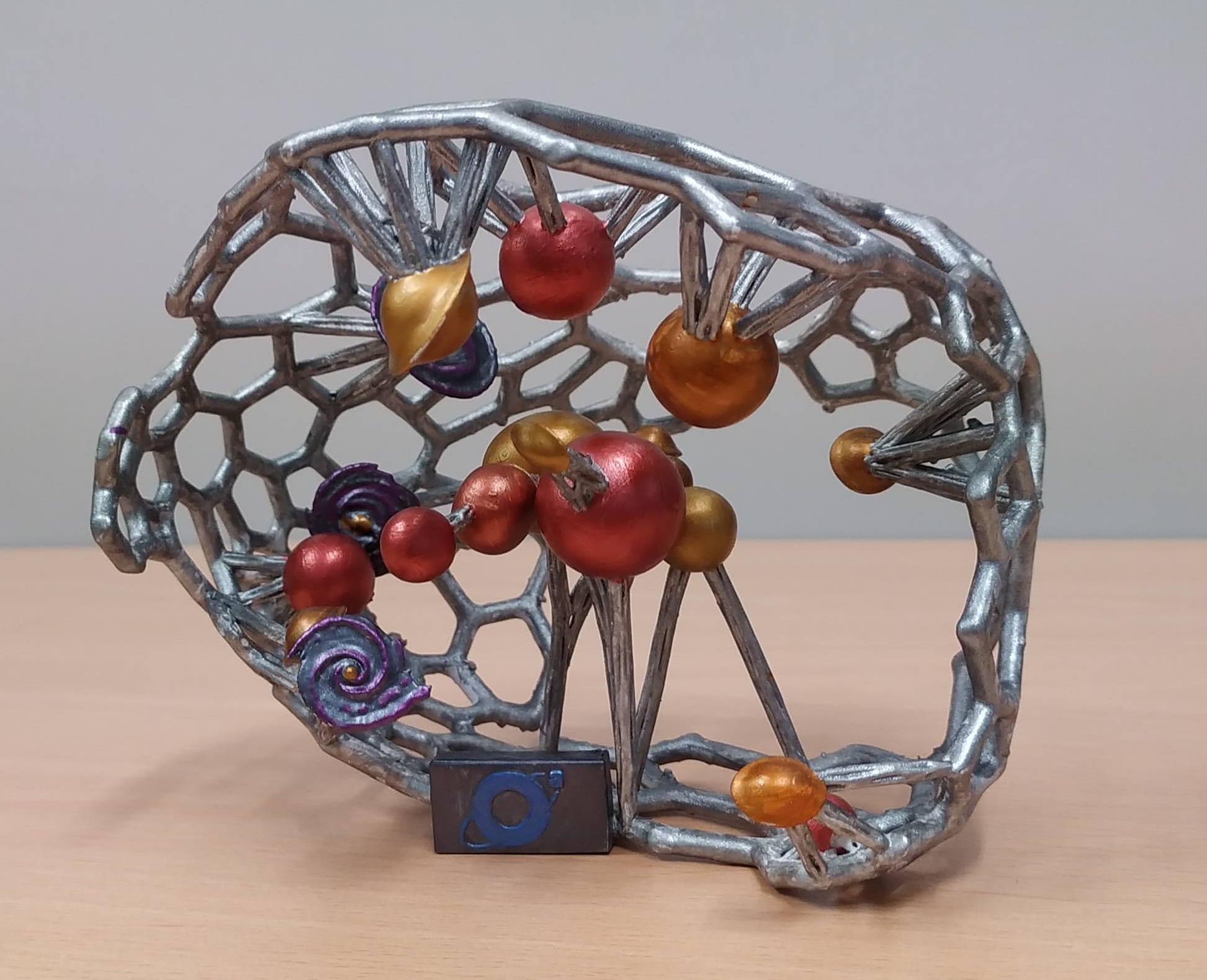Galaxy Clusters
Galaxy clusters are groups of hundreds of galaxies that are bound together by the force of gravity in a region of space. At the center of a cluster there is usually a huge elliptical galaxy, so massive that its gravitational pull helps keep the rest of the galaxies in the cluster orbiting around it.
The galaxies in the cluster are immersed in a halo of dark matter, which we cannot see and which makes up 90% of the total mass of the cluster. Galaxies are connected to each other by filaments of this dark matter.
The Coma galaxy cluster is unique in that it possesses not one, but two gigantic central elliptical galaxies: NGC 4874 and NGC 4889. Its force of gravity and that of the dark matter halo keep more than 1000 galaxies of different types orbiting around the two at the centre: ellipticals, spirals and lenticulars.
The 3D model
In this model we have represented the 20 brightest galaxies in the cluster.
From Earth, we see galaxies as if they were all on the same plane. In the model, this point of view corresponds to placing the logo of the Astronomical Observatory in front of the user. Thus, the individual galaxies in the model are in the same position as we see them in the sky.
The depth position of galaxies is not realistic, as we do not know how far away each of them is from us individually. Since each galaxy has its own motion within the cluster, using the usual method of measuring the redshift of its light to determine the individual distance is not correct, although it is the criterion we have used as no better estimates are available.
The galaxies are found «hanging» from the structure of dark matter filaments in the halo that surrounds the cluster. The halo is not shown in full: gaps left on purpose allow the user to access all the galaxies depicted with their fingers.
The shape of each of the galaxies shows its real morphology: elliptical, spiral or lenticular.
The model has been created by Emilio Terol (OAUV) and Alberto Fernández-Soto (IFCA) from public scientific data on the Coma galaxy cluster.
This work has been carried out with a grant from the R&D&I ‘Proof of Concept’ 2022 (PDC2022) call for projects, financed by the European Union through the NextGenerationEU Recovery, Transformation and Resilience Plan. Project’s reference: PDC2022-133930-I00.

